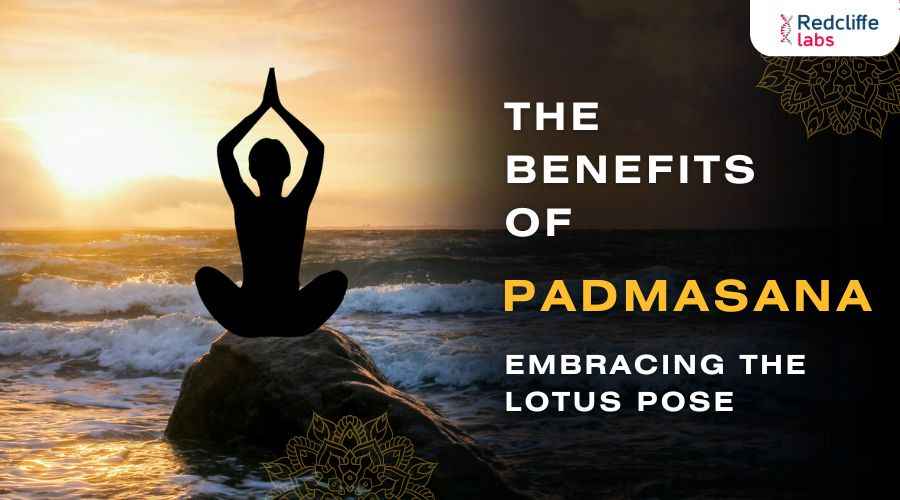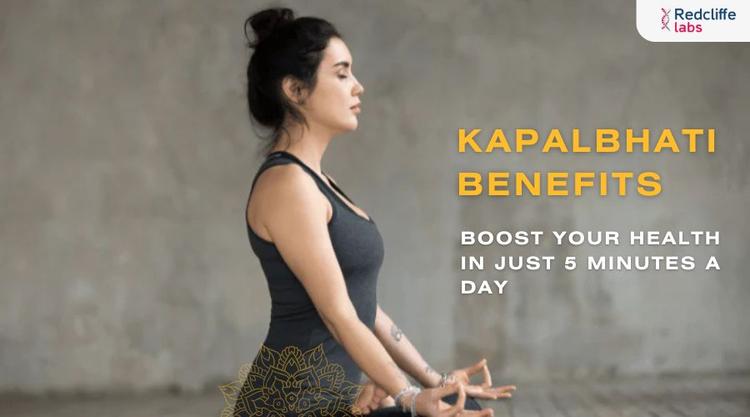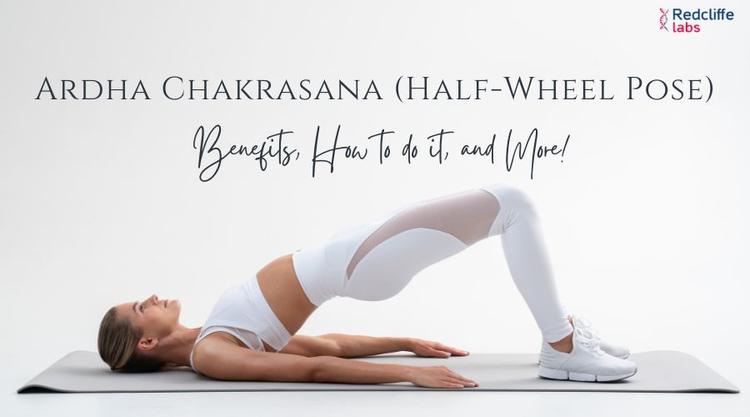The Benefits of Padmasana: Embracing the Lotus Pose

Medically Reviewed By
Dr. Geetanjali Gupta
Written By Sheena Mehta
on Oct 22, 2024
Last Edit Made By Sheena Mehta
on Jul 19, 2025

Padmasana holds a special place in yoga and meditation practices. Padmasana, also known as lotus pose, is a seated pose that may not be aesthetically pleasing but offers physical, mental, and spiritual benefits.
This blog will shed light on the benefits of padmasana (lotus pose), how you can perform it, and some helpful tips for beginners.
What is padmasana?
Padmasana is made from “Padma,” which means lotus in Sanskrit, and "Asana," which means pose or posture. This asana resembles a lotus flower, symbolizing purity and enlightenment. Padmasana activates the Sahasrara chakra in the head, intensifying meditation.
Additionally, padmasana has profound benefits in meditation and fosters inner peace. Besides, it is used for pranayama to stabilize the body and calm the mind.
6 Physical Benefits of Padmasana (lotus position)
Padmasana is an ancient yoga practice predating hatha yoga. It is popularly used for meditation in Hindu, Tantra, Jain, and Buddhist traditions. Its benefits are as follows:
- Makes you more flexible
- Padmasana or lotus pose enhances flexibility, particularly in the hips, knees, and ankles. Regularly practicing padmasana helps stretch the ligaments and muscles around these joints, promoting a greater range of motion.
- Padmasana can be beneficial for various physical activities and can help prevent injuries.
- Strengthens the spine
- Padmasana emphasizes upright posture, strengthening the spine. When you perform padmasana, your spine is naturally aligned, encouraging good posture and minimizing back pain.
- A strong spine is important to maintain stability and balance in the body.
- Enhances circulation
- The sitting position of Padmasana is vital to improving blood circulation. This further ensures proper oxygen and nutrient supply to various organs and tissues. Thus promoting overall health and vitality.
- Besides, the seated position of Padmasana helps reduce the risk of cardiovascular issues by reducing stress and lowering blood pressure.
- Improves digestion
- Do you know that practicing Padmasana can stimulate the digestive organs? This promotes digestion and alleviates issues like constipation, such as bloating.
- In Ardha Padmasana, the gentle compression of the abdomen allows the food to move through the digestive tract, making it beneficial for those suffering from bloating and constipation.
- Tames stress and tension
The sitting position of Padmasana can help tame stress and tension in the body. You may also notice muscle tightness is going away, particularly in the hips and lower back—this release of tension results in a greater sense of relaxation and calmness.
- Strengthens pelvic region
- Padmasana helps strengthen the pelvic region. This supports female reproductive organs and eases childbirth pain.
- The Padmasana pose also helps people with hip-related issues. Regular practice helps strengthen the hip and pelvic muscles. Moreover, this pose relaxes the sciatic nerves and may help people suffering from sciatica pain.
Four mental health benefits of Padmasana
With regular practice of Padmasana, you can improve focus and concentration. You sense the peace of clarity of thoughts and attentiveness. Some mental benefits of Padmasana include:
- Promotes Mindfulness
Padmasana, or lotus pose, is often used as a meditation technique that encourages mindfulness. It encourages present-moment awareness. While performing, you focus on your breath and the sensations in the body.
- Feel more concentrated.
In Padmasana, you sit in a stable and ground position, which can enhance concentration. The pose intends to calm the mind, making staying focused on your thoughts or breathing easier.
- Alleviates symptoms of anxiety and depression
Padmasana helps alleviate symptoms of anxiety and depression. It promotes relaxation and mindfulness and also provides emotional stability. Regular practice may contribute to a better mood and a more optimistic outlook.
- Encourages Spiritual Growth
Padmasana is a sacred pose that fosters spiritual growth and self-awareness. You may find yourself in tune with your inner self and, thus, greater insights and personal transformation.
Getting Interested! Here are helpful tips to perform Padmasana correctly:
To reap all the benefits, it is vital to perform every asana correctly in yoga. Here is a step-by-step guide for your understanding:
- First step: Sit on the floor and extend your legs before you. For added comfort, you can use a yoga mat or cushion.
- Second step: Once you have found a comfortable seat, slowly bend your right knee and bring your right foot to rest on your left thigh, with the sole facing upward.
- Third step: Bend your left knee and keep your left foot on your right thigh, again with the sole facing upward. Ensure your feet are positioned close to your hips.
- Fourth step: Sit up tall. Keep your spine straight and aligned. Place your hands on your knees and palms facing up or down, depending on your preference.
- Fifth step: let your shoulders relax away from the ears.
- Sixth step: Close your eyes and focus on your breath and body’s sensations.
- Seventh step: Stay in Padmasana for a long time. Don’t compromise on your comfort. Then, gradually increase the duration once you are accustomed to the pose.
5 Important Tips for Beginners:
For beginners, it is important to keep a few instructions in mind:
- Use props such as cushions or blocks to support your knees and hips. This can provide more ease and comfort and make the pose more accessible.
- Consistency is key. Practicing Padmasana regularly can help build flexibility and comfort in the pose.
- Don’t push yourself. Listen to your body. Feeling discomfort in your knees or hips can help ease the pose, so try a modified version.
- Do gentle stretches before doing Padmasana. It can warm up your hips, knees, and lower back.
- As Rome was not built in a day, mastering Padmasana can take time, especially for individuals with tight hips or knees.
Conclusion
Incorporating Padmasana into your daily routine can help you experience numerous physical and mental benefits. From enhancing your flexibility, promoting relaxation, and cultivating mindfulness, this yoga pose shows the utmost love, care, and respect for your body.
Padmasana can be a valuable addition to your yoga routine from a meditation point of view or simply as a way to find stillness.
Frequently Asked Questions
1. What are the main health benefits of Padmasana?
The main health benefits of padmasana include improving concentration, stretching knees and ankles, strengthening the spine, relieving anxiety and stress, and improving blood circulation.
2. Which diseases can Padmasana cure?
Padmasana is a powerful yoga practice that can help cure hypertension, breathing problems, and constipation. It also helps stimulate the bladder and kidneys.
3. Can I do padmasana for knees?
Yes. You can do padmasana (lotus pose) for knees. However, it can provide mobility to your knees to the limit. Don’t put too much pressure on me. Besides, individuals with disc problems or knee or ankle injuries should avoid practicing.
4. What are the side effects of padmasana?
The side effects of padmasana include reduced blood flow in the legs, muscle pain and soreness, fatigue, and too much strain. Hence, it would help if you were more careful.
5. Who should avoid Padmasana?
People with knee problems, including a knee injury, hypertension and heart problems, abdominal hernia, and pregnant women or individuals with sciatica pain should avoid practicing padmasana.



